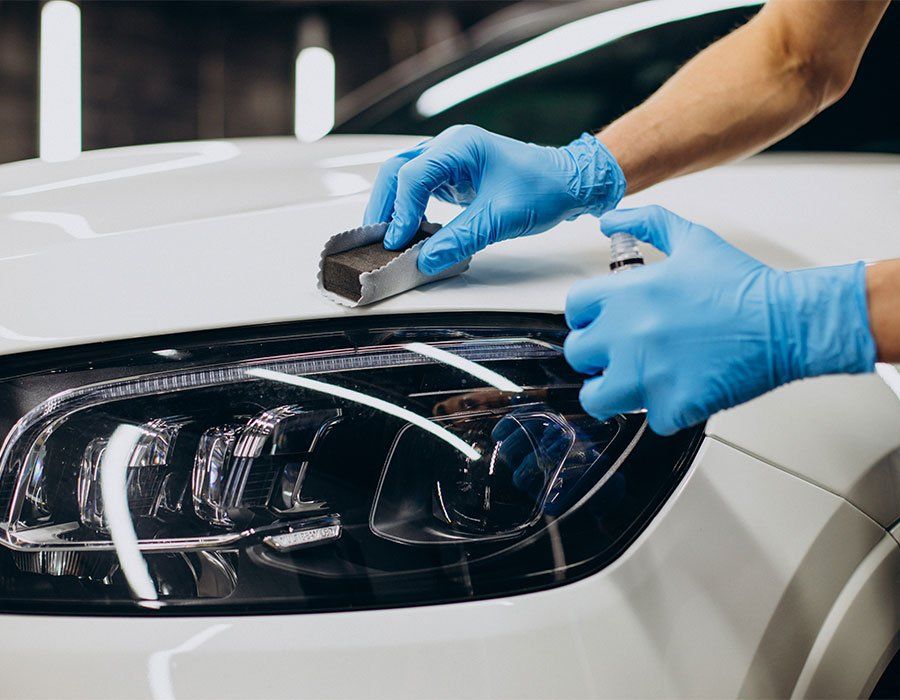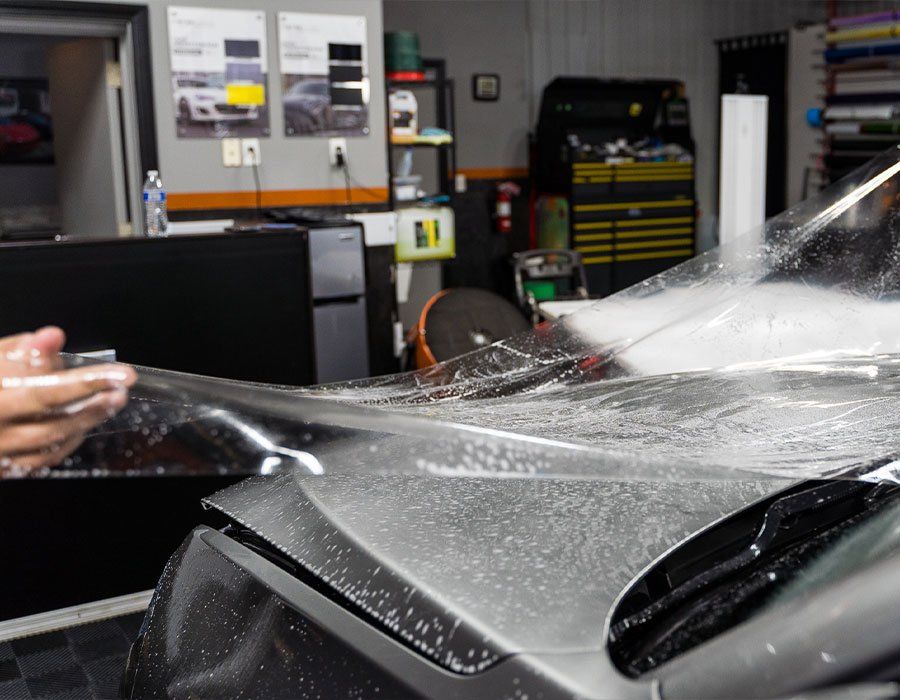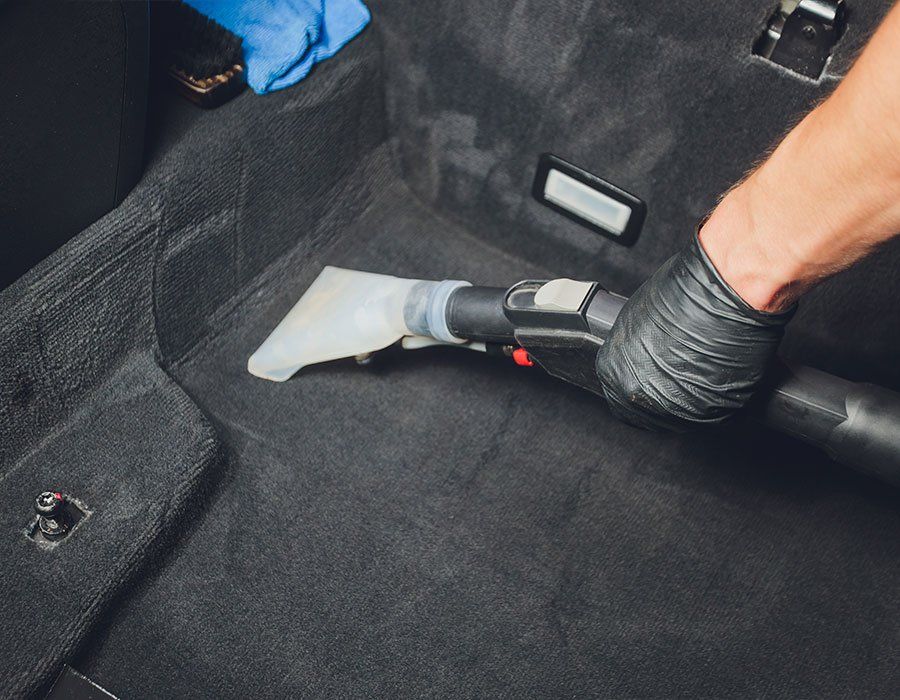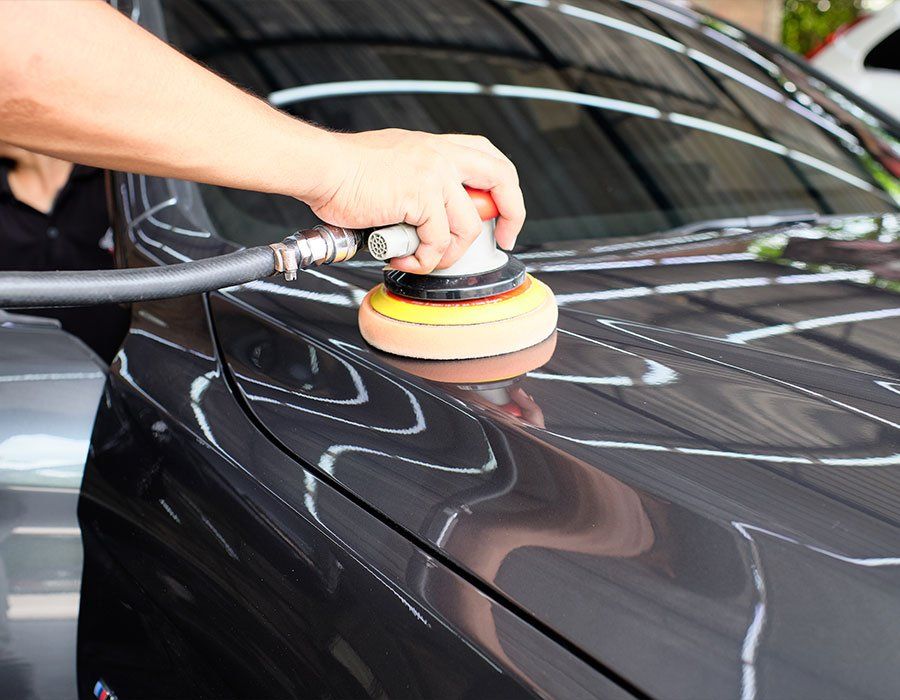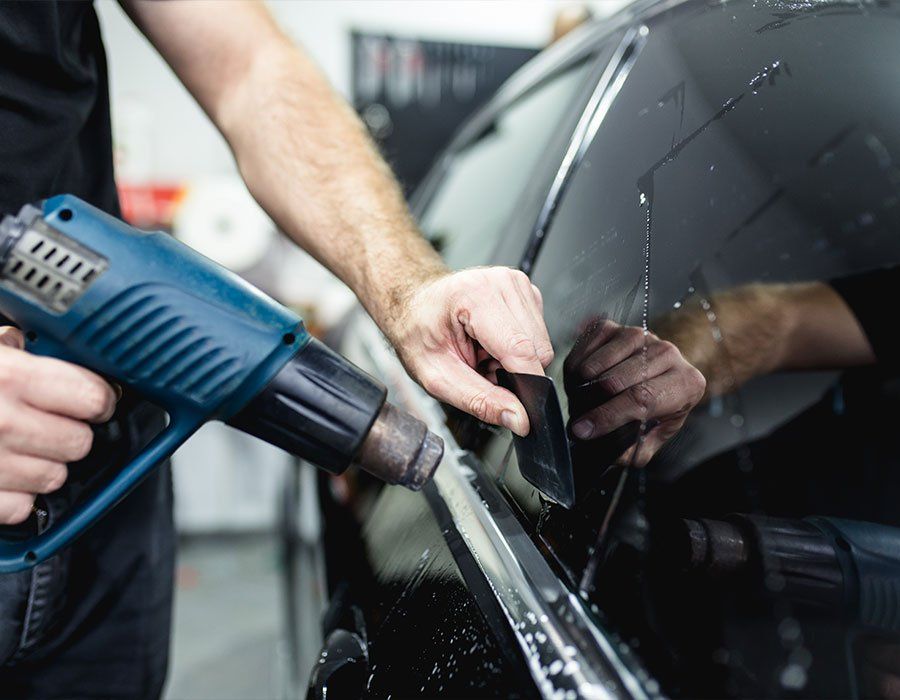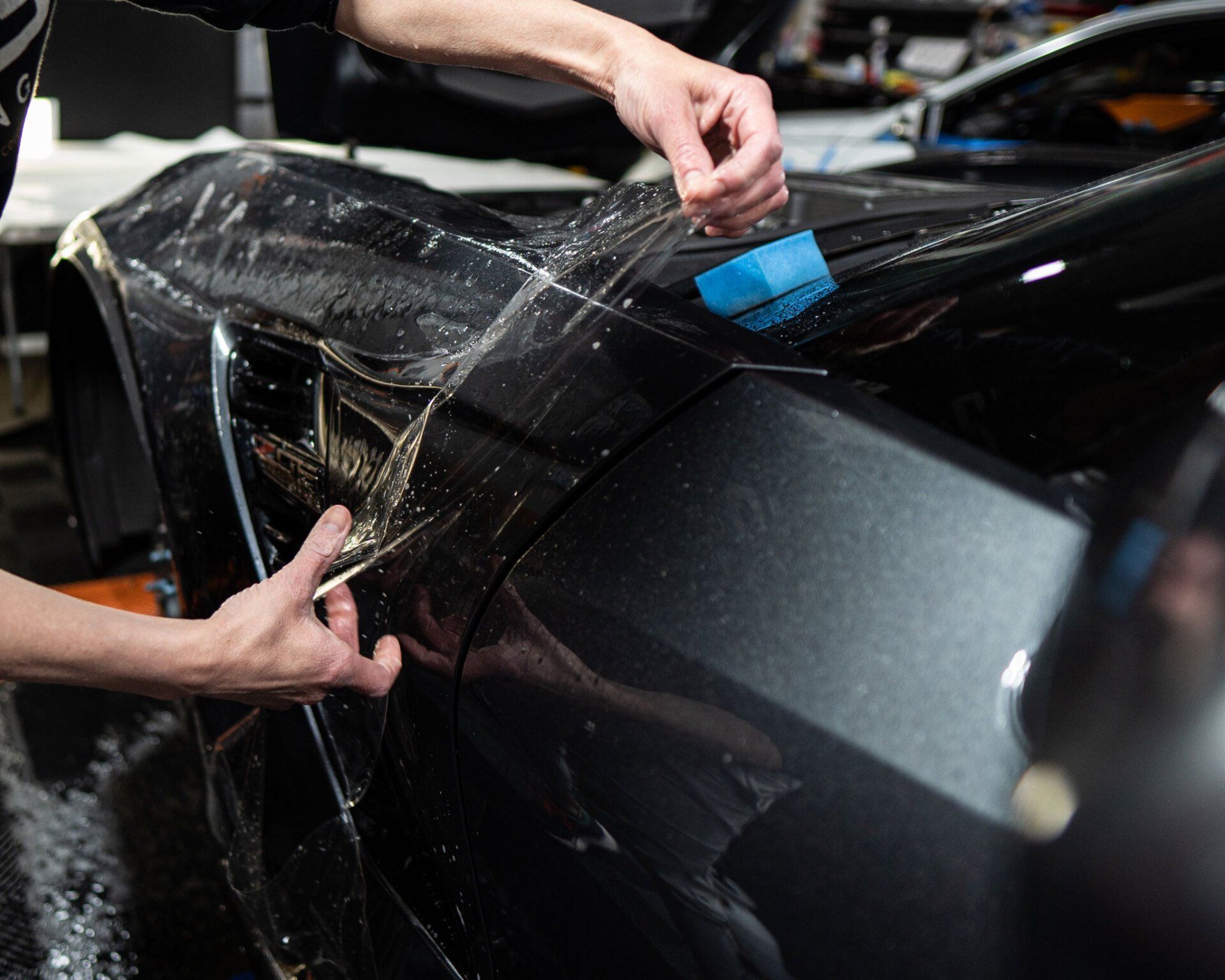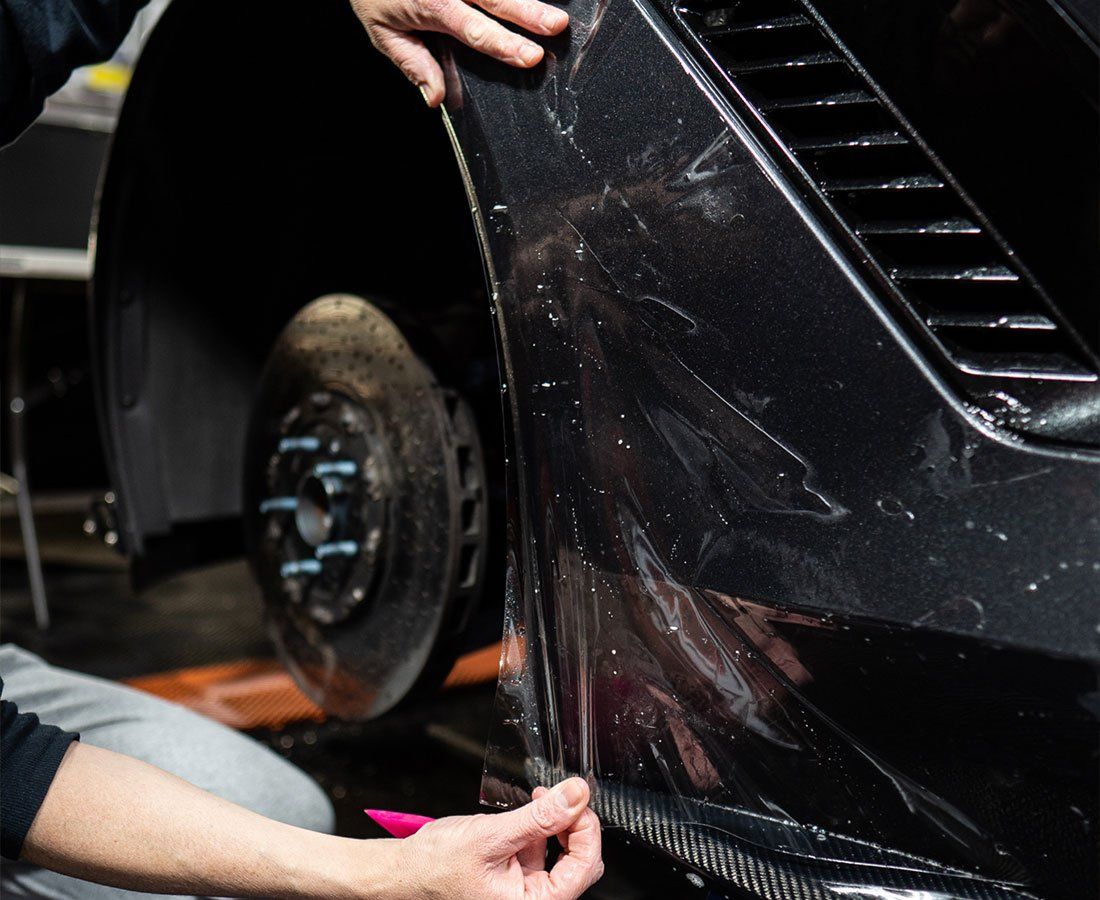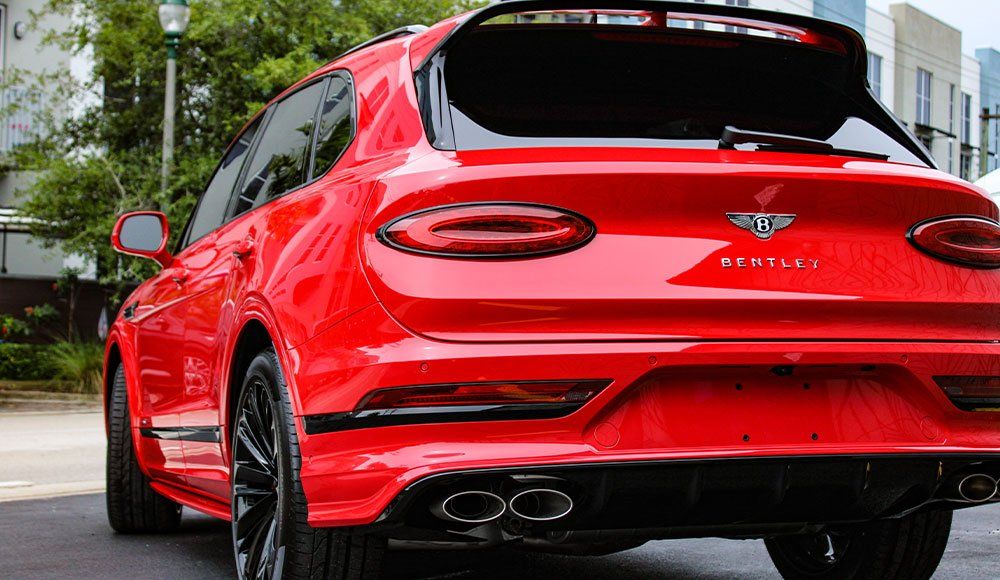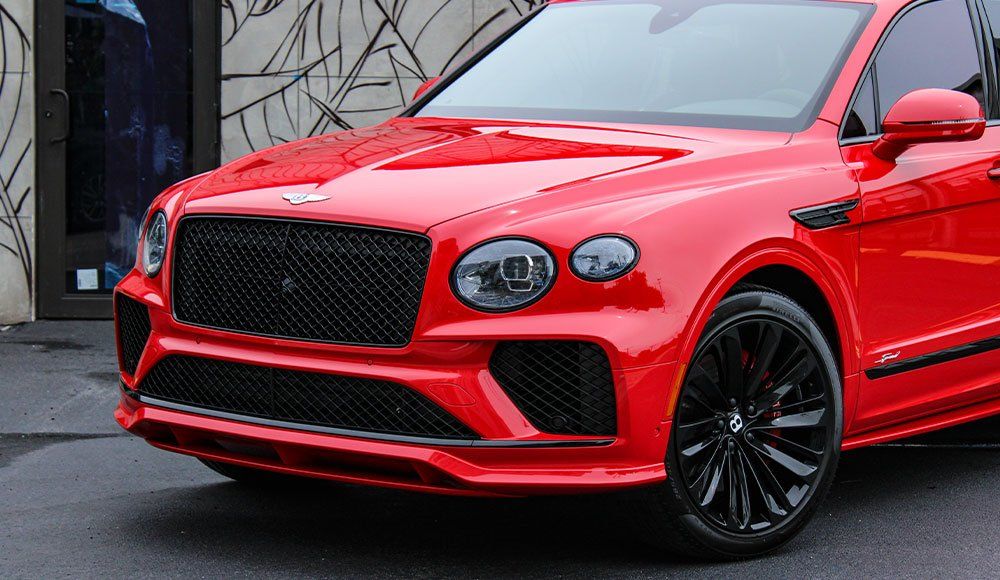Maintaining Your PPF: Essential Tips for Longevity and Best Results
Your car's paintwork deserves protection that lasts. A paint protection film stands as a shield against scratches, stone chips, and harmful environmental contaminants, ensuring your vehicle stays pristine through daily wear and tear. Over the years, PPF has evolved to become a favorite among auto enthusiasts who prioritize preservation over constant touch-ups.
To maintain your paint protection film and ensure lasting results, regularly clean it using pH-neutral products with a microfiber mitt to avoid damaging the film. Additionally, remove contaminants like bird droppings and bugs immediately, and apply high-quality ceramic coating for added protection against environmental elements.
What is Paint Protection Film (PPF)?
Paint protection film is an innovative solution designed to shield a car's paint from potential harm. This clear, durable thermoplastic urethane film acts as a robust protective barrier against various environmental aggressors such as dirt, road debris, and harsh weather conditions. Picture this: without a paint protection film, your vehicle is exposed to an endless barrage of damaging elements; with it, you're investing in a form of insurance for your car's appearance and longevity.
One standout feature of paint protection film is its remarkable self-healing capability. Imagine a tiny scratch appearing on your freshly applied film—it's frustrating, isn’t it? However, thanks to the elastomeric polymers within the film, that scratch can essentially vanish with exposure to heat. Whether it’s coming from sunlight or warmth generated by washing your car with hot water, these minor abrasions can be quickly mitigated by the film's unique properties.
But there's more to its benefits. A paint protection film's resistance to UV radiation plays a significant role in preserving your vehicle’s aesthetic appeal. Over time, one common issue with exposed paint surfaces is fading or discoloration caused by prolonged sun exposure. With a paint protection film in place, you’re not just preventing unsightly oxidation of your vehicle’s finish; you're actively maintaining its value and vibrancy.
Understanding these characteristics highlights how integral this protective layer is for maintaining both the integrity and visual allure of your vehicle.
Cleaning and Maintenance Tips
Proper cleaning and maintenance play a pivotal role in ensuring the longevity and performance of your paint protection film. Many car owners may think that washing their vehicle is enough, but it’s the nuances of care that truly preserve the paint protection film. With that in mind, it's essential to adopt a more systematic approach to maintenance. Each step becomes an essential piece of the puzzle in protecting that shiny finish.
Step-by-Step Cleaning Guide
- Pre-rinse: Start by incorporating a pre-rinse process into your routine. This step might seem simple, but it lays the groundwork for effective cleaning. When you pre-rinse, you're effectively washing away loose dirt and debris that can scratch the paint protection film during your subsequent washing process. Think of it as preparing a canvas before painting; you wouldn't want any grit ruining your masterpiece.
- Gentle Washing: Next comes gentle washing, which is the crux of maintaining your paint protection film. The type of soap you use is crucial here; a pH-neutral car soap is non-negotiable because harsh chemicals can destroy the film over time. Use a microfiber mitt and aim to wash your car in straight lines rather than circles. This method helps prevent swirl marks and ensures thorough cleaning. The goal here is twofold: keeping the paint protection film safe and ensuring it looks pristine.
- Rinse and Dry: Once you've cleaned the vehicle thoroughly, engage in a thorough rinse and dry. Rinsing with clean water is vital for removing all traces of soap, which can leave behind residue and diminish the clarity of the film. After rinsing, use a soft microfiber towel to dry the surface carefully, ensuring no soap residue or water spots remain—these could become more challenging to remove later.
Keeping these tips in mind will transform routine maintenance from a chore into a practice that protects your investment and keeps it looking sharp on every drive.
Common Mistakes to Avoid
Although many steps contribute to optimal maintenance, there are pitfalls that must be avoided for effective care. Awareness of proper methods helps prevent such mistakes, ensuring that you keep your film looking as good as new while extending its lifespan significantly.
- Use of Abrasive Materials: One of the first serious pitfalls to dodge when caring for your paint protection film is the use of abrasive materials. These include anything from scrubbing brushes to rough sponges. Although it might seem harmless to scrub away dirt and grime, these tools can scratch the film's surface, leading to damage that is often difficult, if not impossible, to repair. Instead, opt for microfiber towels or soft cloths that will lift dirt without harming the protective layer.
- High-Pressure Washing: Another grave error in paint protection film maintenance involves the aggressive approach of high-pressure washing. While it might clean a vehicle quickly, this method can easily peel back the edges of your PPF. Instead, a gentle, low-pressure wash will preserve not just the film itself but also your car's original finish beneath it. To maintain both cleaning effectiveness and safety, consider using a garden hose with a standard spray nozzle set to a delicate stream. This allows you to clean efficiently without risking damage to essential areas.
- Ignoring Professional Inspections:
Neglecting routine professional inspections is another mistake that many make unknowingly. Regular checks by professionals can catch issues like lifting edges or bubbles before they worsen. This proactive step ensures that minor problems do not escalate into expensive repairs later on. Think of it as a regular check-up at the doctor—your paint protection film needs monitoring too! Making time for these critical inspections can save you significant headaches—and costs—in the long run.
Long-Term Care Practices
- Regular Inspection: Conducting regular inspections is not just a good practice; it’s vital for the performance and aesthetic of your paint protection film. By making a habit of checking your PPF every few weeks, you can quickly spot signs of wear and tear, such as lifting edges or small abrasions. Early detection allows for timely repairs, preventing minor issues from escalating into significant ones that would require costly replacements. As you inspect, pay close attention to high-contact areas like the front of the hood and side mirrors, where damage tends to occur more frequently.
- Immediate Contaminant Removal: Just as important as inspections is the immediate removal of contaminants. Bird droppings, tree sap, and bug splatters should be cleaned right away—ideally, within hours—to prevent them from penetrating the paint protection film. Leaving these substances too long can cause discoloration or even damage the protective layer itself. A simple solution is to keep a microfiber cloth in your vehicle. If you notice something unfortunate landing on your car, you can wipe it off before it has a chance to set in.
- Environmental Awareness: Being mindful of your vehicle's environment is another critical aspect of long-term paint protection film maintenance. Urban areas often expose vehicles to construction debris and more airborne contaminants. If you live in such an area—or near trees that drop sap—consider parking in a garage whenever possible. Protecting your vehicle from direct exposure reduces potential damage from falling branches or abrasive materials kicked up by passing cars. Additionally, when taking your car out after heavy storms or rainy days, check for tree debris or road grime that may have gathered on the film.
- Routine Wash: While it might seem tedious, maintaining a routine wash schedule is key to extending the life of your paint protection film. Aim for a biweekly wash using pH-neutral products that are safe for paint protection films; this prevents buildup and maintains clarity in the film. It's important to avoid harsh chemicals or high-pressure washes that can weaken the adhesive properties over time. Instead, a gentle hand wash with soft sponges will help preserve both the appearance and function of your PPF. Each care technique adds to an overall strategy that ensures your paint protection films remain effective and visually appealing.
- Waxing and Protection Products: Finally, applying compatible waxes, sealants, or having a high-quality ceramic coating can provide an added layer of protection against UV rays and environmental pollutants. Ensure that these products are specifically labeled as safe for use on your paint protection film because certain waxes may leave streaks or residues that compromise its clarity. By incorporating this step into your regular maintenance routine, you're not only enhancing shine but also reinforcing the protective qualities of the film itself.
These techniques seamlessly support one another in maximizing the effectiveness and lifespan of your protective film, leading us naturally into further enhancements aimed at safeguarding its longevity.
Enhancing PPF Longevity with Ceramic Coating
One of the most effective ways to protect your paint protection film is through the use of ceramic coatings. Imagine applying a shield that not only guards your vehicle against harsh elements but also simplifies the cleaning process. Ceramic coatings provide a strong barrier against contaminants like road grime, tree sap, and bird droppings. This extra layer acts as armor, ensuring that even if these unwanted substances reach your car's surface, they won't bond with it as easily, allowing for simple wipe-downs during routine maintenance. So when considering ceramic coatings, think of it as investing in your vehicle’s longevity rather than just an extra expense.
It’s essential to recognize that paint protection film isn't invincible; it faces natural wear and tear over time. While some skeptics may argue that certain enhancements add unnecessary expenses, consider this: a proactive approach towards protection can prevent considerably larger repair costs down the line. Think of replacing a worn-out film versus maintaining and extending its lifespan—a little investment now could save you much more later. The beauty of these enhancements lies in their ability to bolster the inherent qualities of paint protection film while providing assurance against unforeseen damage.
Top Paint Protection Film Services in Fort Lauderdale, FL
Protect your vehicle with Detail Geeks’ top paint protection film services in Fort Lauderdale, FL. Our expert team uses premium-quality film to shield your car’s paint from scratches, chips, and environmental hazards, ensuring it stays pristine and gleaming. Enjoy peace of mind knowing your investment is safeguarded with our cutting-edge solutions. Contact us today to book your appointment and give your car the ultimate protection it deserves. Call us at (305) 896-2430 to get started!
Detail Geeks Blog
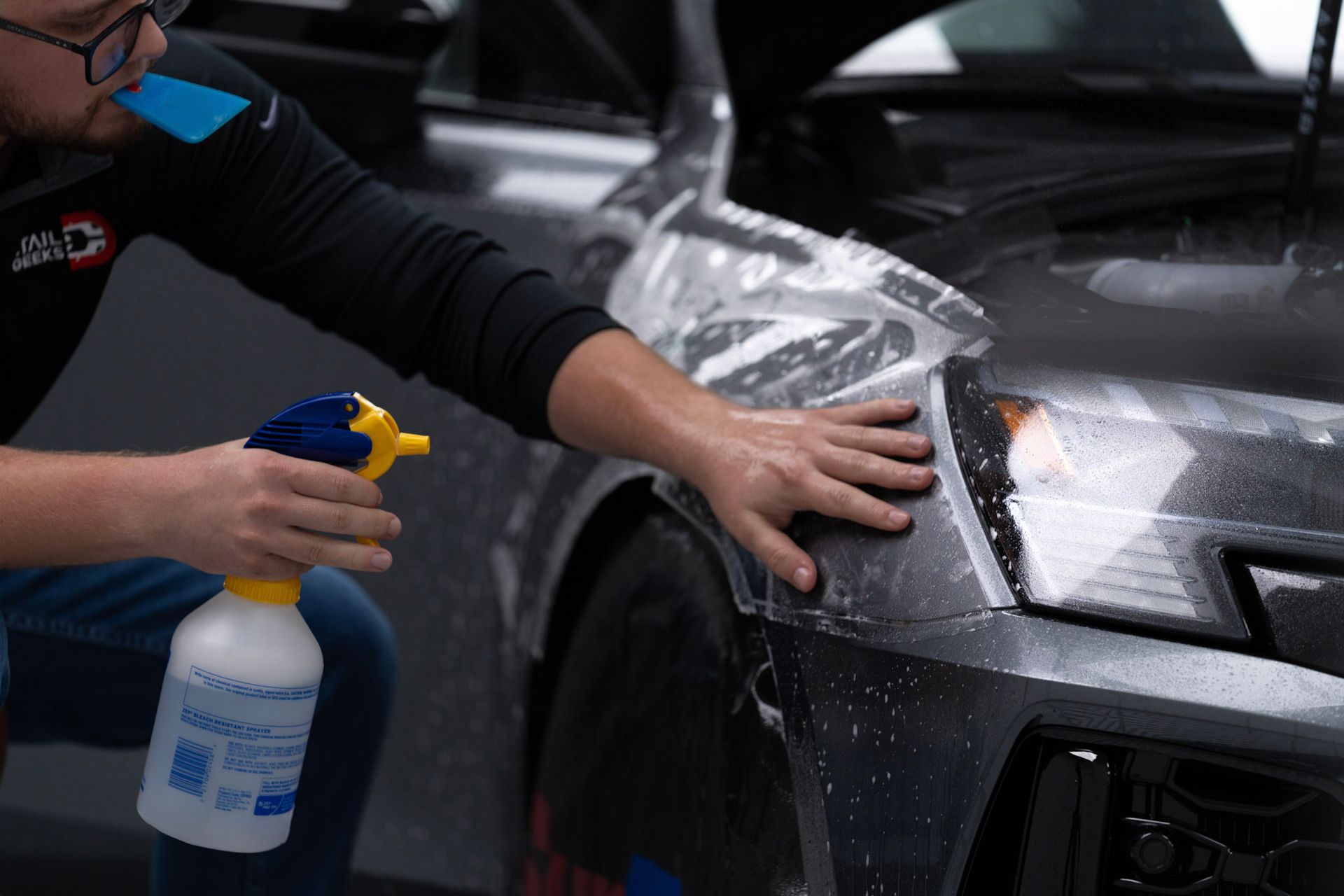
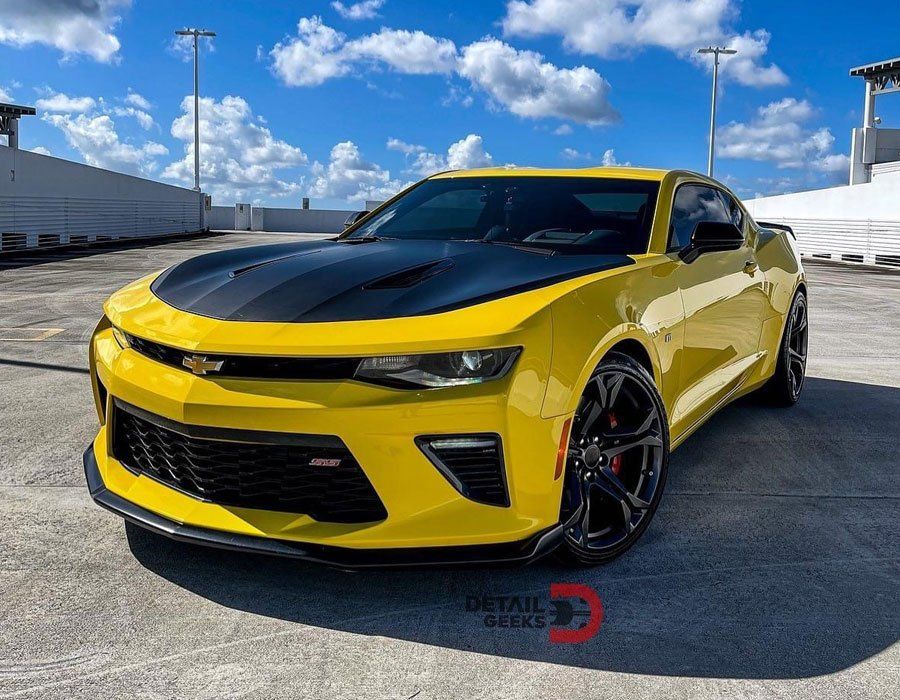
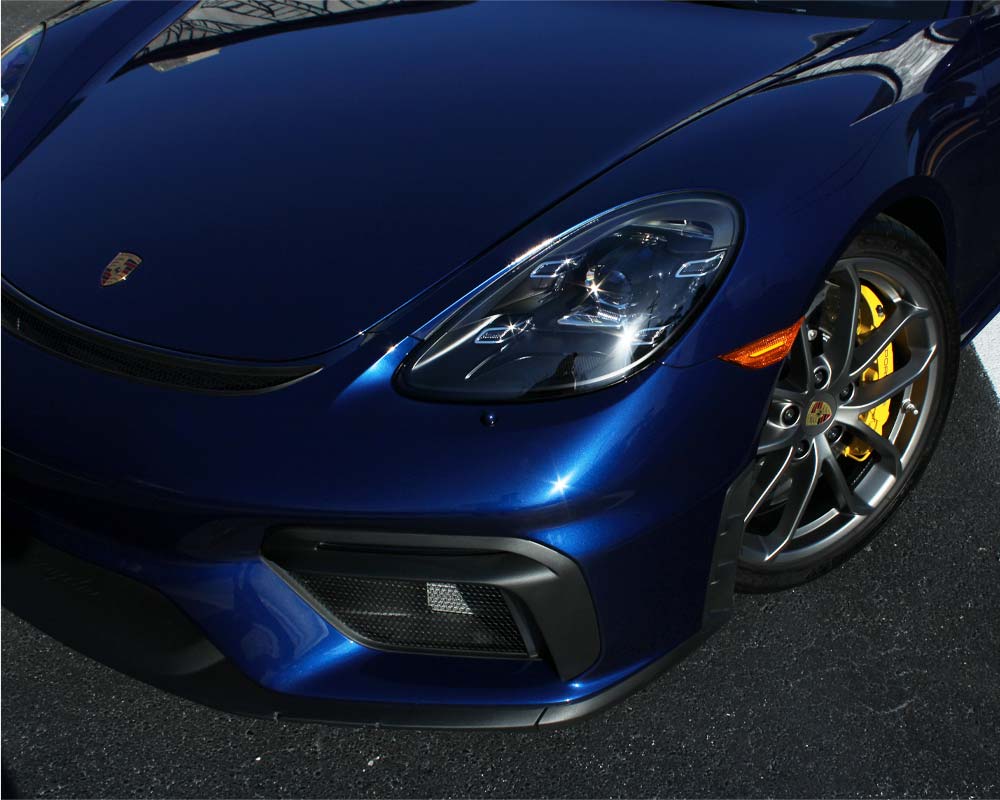
Detail Geeks is a fully-licensed and highly professional automotive and marine detailing shop based in Fort Lauderdale, Florida. We work tirelessly to bring paint perfection, restorative surface corrections, and complete sanitation and decontamination of interior and exterior surfaces of cars, trucks, SUVs, and recreational water crafts like boats and jetskis. Always aiming to exceed your expectations as our valued customer is priority to us, and you can rest easy knowing your vehicle is always in good hands.
Quick Links
Our Location
3472 NE 5th Ave, Unit 11 Oakland Park, FL 33334 United States
Connect With Us
PHONE: (305) 896-2430
EMAIL: business@detailgeeks.com
This website was designed by the team at
Detailers Roadmap, a platform developed for detailing operators across the globe.
Terms of Service
|
Privacy Policy
All Rights Reserved | 8bitcreative, LLC | Detail Geeks

